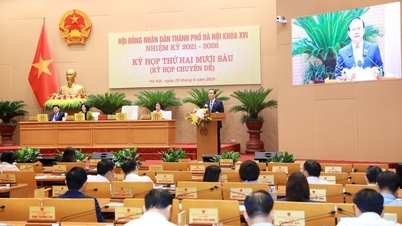SGGP
In an interview with Nikkei Asia, senior International Monetary Fund (IMF) official Krishna Srinivasan warned that a world divided by US-China tensions could have significant economic consequences for Asia.
 |
| Operations at a container port in China. Photo: Reuters |
Many factors influence
China and the US account for 42% of the global economy. Tensions between the two countries have increased since 2017 across a range of sectors. The IMF predicts that tariffs alone will reduce global GDP by 0.4% in 2022, which is a pretty big impact. There has been a lot of noise about tariffs, non-tariff barriers, and tensions have been heightened by the conflict in Ukraine, Srinivasan said.
The rising trade tensions will not only hurt China and the US but also Asia as a whole, as the region is deeply integrated into the global supply chain and has significant trade exposure to both countries. If the world is heavily divided based on the countries’ stance on the conflict in Ukraine, Asia’s GDP could fall by 3%-4% due to the decline in trade. Japan and South Korea, two countries with very large export volumes to China, would be affected. ASEAN members such as Vietnam and Cambodia could also be strongly affected.
As the conflict in Ukraine continues, the risk of geopolitical fragmentation becomes more apparent. Asia has benefited significantly from globalization and free trade, so the region will be more affected in the medium to long term as the fragmentation deepens. In addition, there has been an increase in debt across all sectors in Asia, from governments, households to businesses, as a result of the Covid-19 pandemic. Asia’s share of global debt across all sectors has increased from 25% before the Covid-19 pandemic to 38% after the pandemic. Similarly, inflation is also rising in much of Asia, although not as high as in other regions. According to the IMF, central banks should address inflation immediately to avoid shifting inflation expectations that undermine central bank credibility.
Dependent on China, India
The IMF has revised up its forecast for China’s growth in 2023 to 5.2%, from 4.4% in October 2022, and now projects 4.5% growth for 2024. It predicts that every 1% increase in China’s growth rate will lead to a 0.3% increase in growth rates in other Asian countries over the medium term. Strong growth in China will lead to positive spillover effects for the rest of the region. Countries that export finished goods and durable consumer goods to China will benefit the most. Cambodia, Vietnam, and Japan, which attract many Chinese tourists, are also likely to benefit.
However, the IMF has revised down its medium-term growth forecast for China to below 4%, citing slow progress in structural reforms. This has implications for Asia, where medium-term growth momentum will depend on how well China implements reforms to boost long-term growth, as well as whether other major economies such as India can maintain the rapid growth rates of recent years.
Source





![[Photo] Keep your warehouse safe in all situations](https://vphoto.vietnam.vn/thumb/1200x675/vietnam/resource/IMAGE/2025/10/1/3eb4eceafe68497989865e7faa4e4d0e)































![[Photo] President of the Cuban National Assembly visits President Ho Chi Minh's Mausoleum](https://vphoto.vietnam.vn/thumb/1200x675/vietnam/resource/IMAGE/2025/10/1/39f1142310fc4dae9e3de4fcc9ac2ed0)































































Comment (0)